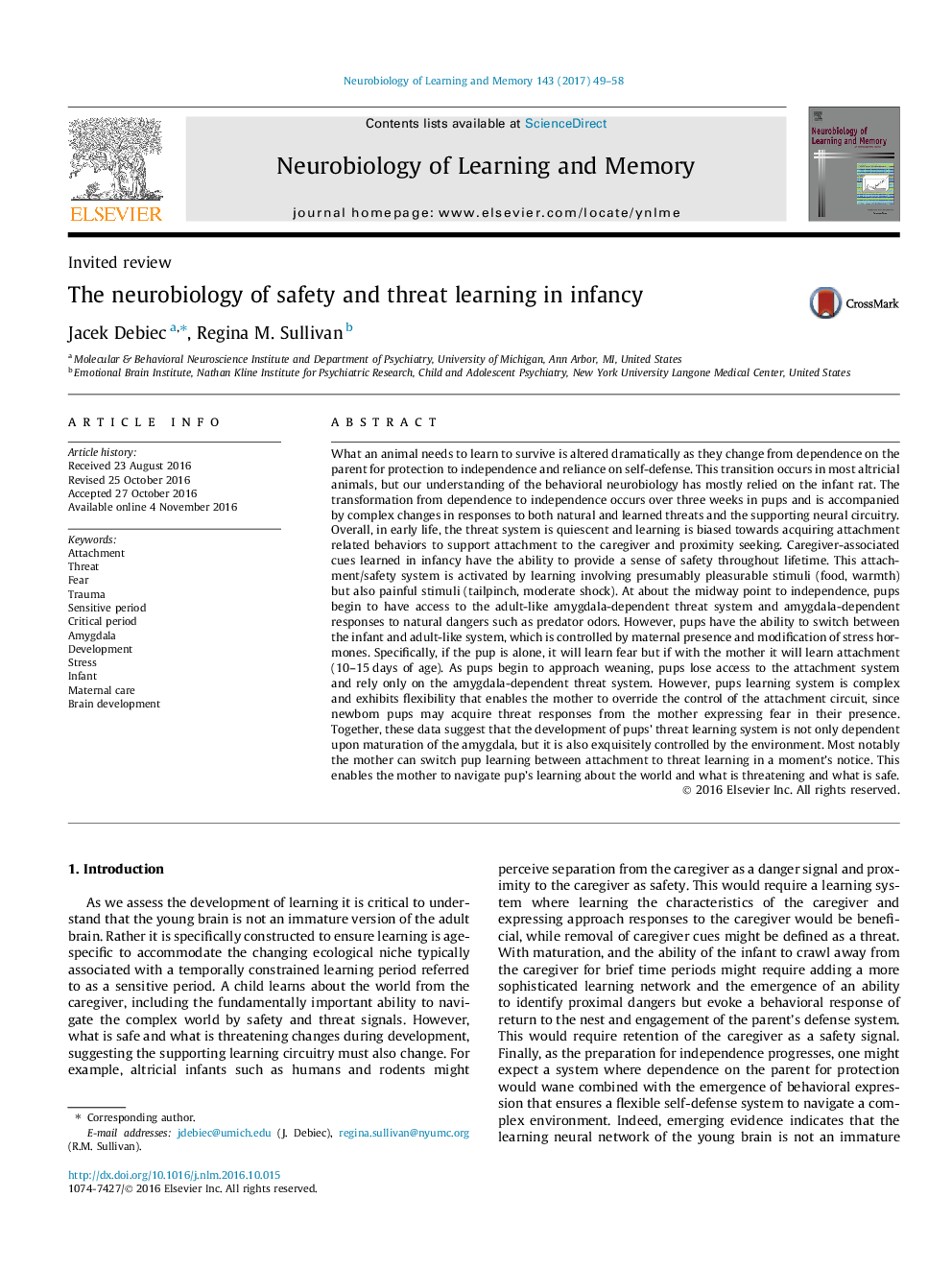| کد مقاله | کد نشریه | سال انتشار | مقاله انگلیسی | نسخه تمام متن |
|---|---|---|---|---|
| 5043154 | 1475130 | 2017 | 10 صفحه PDF | دانلود رایگان |

- In newborn rat pups attachment learning is dominant and threat learning is quiescent.
- Around postnatal day 10 classical threat conditioning emerges.
- Maternal presence may prevent threat conditioning in pups until postnatal day 10.
- From birth pups can acquire threat responses from the mother through social learning.
What an animal needs to learn to survive is altered dramatically as they change from dependence on the parent for protection to independence and reliance on self-defense. This transition occurs in most altricial animals, but our understanding of the behavioral neurobiology has mostly relied on the infant rat. The transformation from dependence to independence occurs over three weeks in pups and is accompanied by complex changes in responses to both natural and learned threats and the supporting neural circuitry. Overall, in early life, the threat system is quiescent and learning is biased towards acquiring attachment related behaviors to support attachment to the caregiver and proximity seeking. Caregiver-associated cues learned in infancy have the ability to provide a sense of safety throughout lifetime. This attachment/safety system is activated by learning involving presumably pleasurable stimuli (food, warmth) but also painful stimuli (tailpinch, moderate shock). At about the midway point to independence, pups begin to have access to the adult-like amygdala-dependent threat system and amygdala-dependent responses to natural dangers such as predator odors. However, pups have the ability to switch between the infant and adult-like system, which is controlled by maternal presence and modification of stress hormones. Specifically, if the pup is alone, it will learn fear but if with the mother it will learn attachment (10-15Â days of age). As pups begin to approach weaning, pups lose access to the attachment system and rely only on the amygdala-dependent threat system. However, pups learning system is complex and exhibits flexibility that enables the mother to override the control of the attachment circuit, since newborn pups may acquire threat responses from the mother expressing fear in their presence. Together, these data suggest that the development of pups' threat learning system is not only dependent upon maturation of the amygdala, but it is also exquisitely controlled by the environment. Most notably the mother can switch pup learning between attachment to threat learning in a moment's notice. This enables the mother to navigate pup's learning about the world and what is threatening and what is safe.
189
Journal: Neurobiology of Learning and Memory - Volume 143, September 2017, Pages 49-58